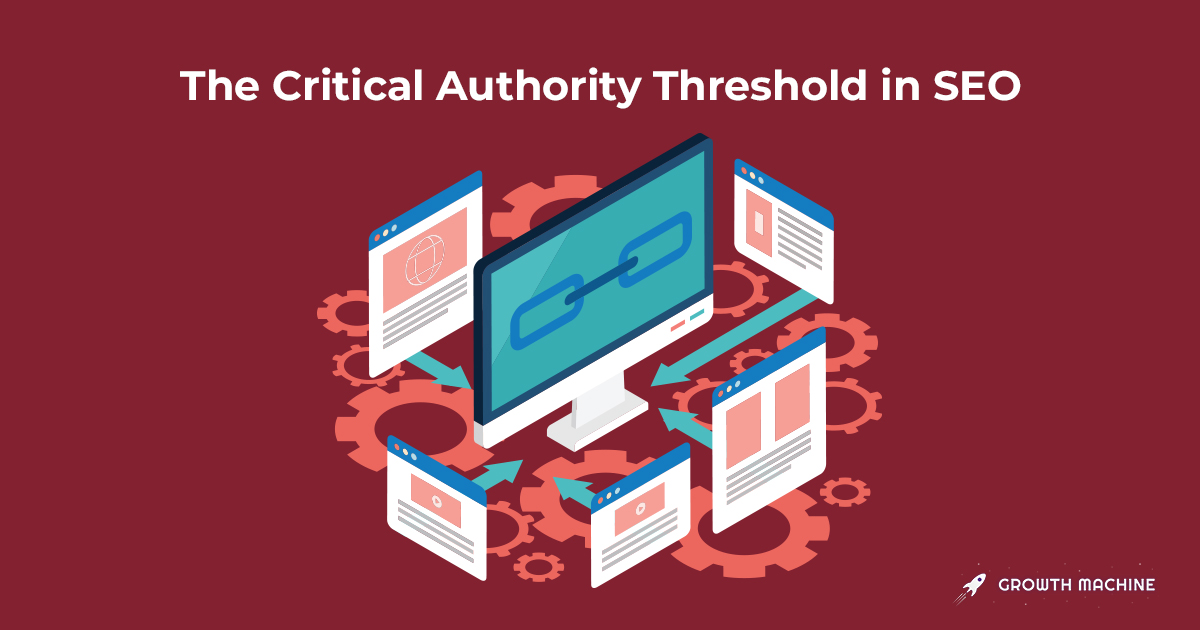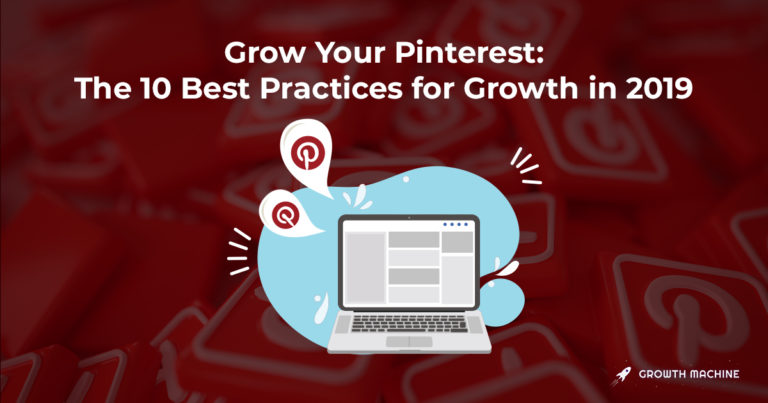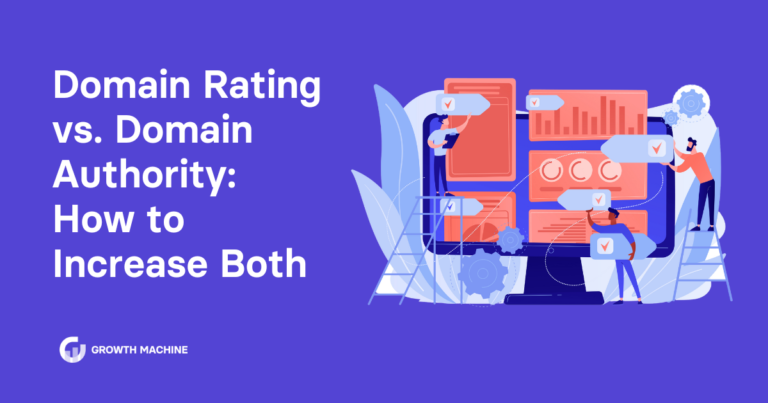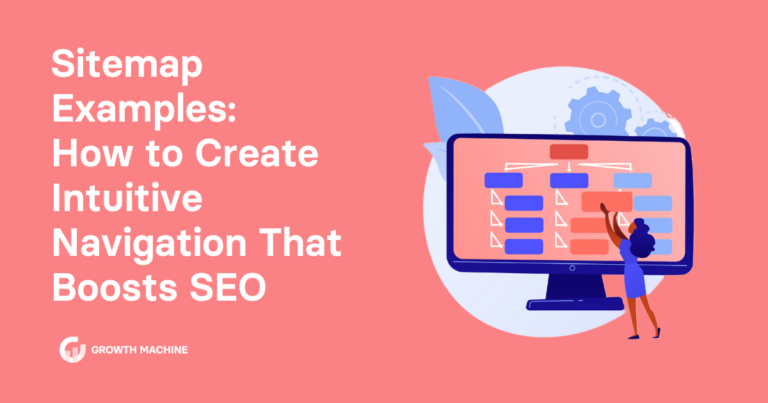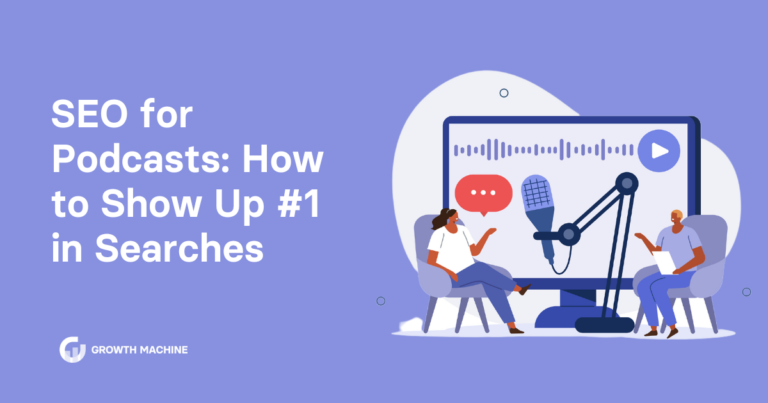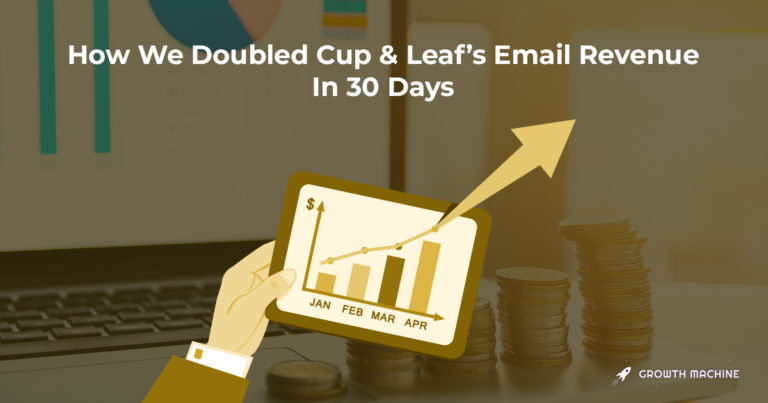The Critical Authority Threshold: Why Patience Pays in SEO
We’d all love it if search traffic grew in a nice curve up and to the right — if you could predictably increase your organic traffic by a set amount each month, without having to worry about Google’s unpredictability.
But SEO doesn’t work like that. Across all of our clients since starting Growth Machine, I’ve never seen a new site’s search traffic grow completely smoothly.
It always starts with almost nothing for a long while, then starts to increase more rapidly, before reaching a point of consistent, healthy growth.
Here’s Cup & Leaf’s:

Or this client who had a very steady growth curve once their traffic started trickling in:

Or this one who sat at nothing for six months before it ticked up dramatically:

You get it now:

And sometimes, sites even see crazy jumps like this client who had been publishing for five months with only 500 organic visitors a week, then jumped to 20,000 visitors a week and stayed there:

Why does this happen? Well, no one knows exactly how Google works but our best evidence suggests it’s based on something we call the Critical Authority Threshold. CAT for short.
The Critical Authority Threshold
A site, and the relevant pages on it, need to reach a certain level of authority before they start ranking. You typically hear about this in the form of “Site Authority.”
As you publish new content every week, your potential SEO traffic goes up based on the combined search volume of all the keywords you’re targeting.
Let’s say you publish 10 articles, each with a search volume of 1,000. Once those articles are live, you have 10,000 in total potential search traffic from their combined volumes.

But if your site hasn’t crossed the Critical Authority Threshold, you’re not realizing any of that traffic. Even though the SEO value of your site is going up each week, your traffic is staying the same.

Then, through some combination of link building and patience you cross that Critical Authority Threshold and suddenly you can see a boost in traffic. You’re finally starting to get that potential traffic you’ve built up.

How to Cross the Critical Authority Threshold
There are two important variables for crossing the CAT: link building, and patience.
Being patient gives your site more time to get out of Google’s “new site purgatory,” and link building allows you to increase your authority and cross the threshold faster.
You need some combination of both link building and patience, but generally the more link building you do, the quicker you cross the Critical Authority Threshold. And the longer you’re willing to be patient, the less link building you might have to do.
You might be able to just wait and do no link building, but we don’t recommend this for new sites that are serious about getting SEO traffic. Without link building, it might take a year to see a valuable amount of traffic, even if you’re publishing 10+ times per month. See if you can guess when this site stopped waiting and added link building:

But link building isn’t a magic bullet. Even with a ton of link building, you’ll still have to do some waiting — because time is another important factor in getting Google to recognize your site as an authority. If you’re too new, Google conservatively assesses that, before launching the site, you must not have had any previous experience with the topic at hand. So, it waits to rank your site until you start to convince the algorithm (with enough consistent, high-quality content) that you know a thing or two about the subject you’re writing about.
That’s why your site needs to be around for a certain amount of time to cross the threshold and get out of Google’s “new site purgatory,” and each individual page needs to be around for a certain amount of time (no one but Google knows exactly how long) to cross the threshold for its keywords. And that’s why you may have to wait 6+ months on a new site to start to see the amount of SEO traffic you were expecting.
And it’s why even after you start to see organic traffic on your site, you might not see it on newer pages. It doesn’t just take time for your site to rank, it also takes time for each individual page to rank, so the more pages you put up early on the better (within reason).
Thankfully, the time it takes each page to rank decreases considerably as your overall site authority increases. For example, this client saw their first, second, and third page rankings within two weeks of publishing their first article because they had so much existing authority from PR and press mentions.

Why “No Results” Isn’t “No Results”
The Critical Authority Threshold is why seeing “no results” for the first few months of working on SEO is not necessarily a bad omen. Your potential SEO traffic is still increasing — you just haven’t crossed that threshold yet.
It’s also why we track other metrics besides traffic early on in a project. There are leading indicators of your SEO traffic like your publishing cadence, keyword rankings, and links built that are contributing to your site crossing the Critical Authority Threshold as quickly as possible.
This image is a perfect example. This site had almost no organic traffic coming in, but it was clearly making progress towards crossing the CAT based on its rankings:

Quitting Early and the Critical Authority Threshold
This is why we tell every single client that SEO is a long game. The biggest implication of the Critical Authority Threshold is if you start an SEO project and quit early, you’ll delay crossing this threshold, and you might never cross it.
If you stop publishing before you’ve crossed this authority threshold, that can slow down how quickly Google treats your site as an authority since you’ll have less material going out, and the material you do have will be getting progressively less fresh.
And if you do happen to eventually cross the threshold just from waiting, you’ll have left a ton of potential keyword traffic on the table by prematurely stopping publishing. That means that, even if you do cross the CAT, you’ll be getting a lot less value from whatever investment you made to get to that threshold.
So, if you feel like your results are coming in too slowly and you want to divest, it’s better to continue putting some effort towards link building or PR than to withdraw your SEO investment entirely. The longer you delay crossing this threshold, the longer it’ll take to see any ROI on your SEO work.
Analyzing Your Strategy: Is the CAT Holding You Back?
The key question for any SEO strategy that isn’t already bringing in a lot of traffic, then, is whether there’s something wrong with your strategy or whether you just haven’t crossed your Critical Authority Threshold yet.
In most cases your strategy is perfectly fine. You just need to be patient and keep working on getting to, and surpassing, that threshold.
But if it feels like you’re making no progress and you’re not sure if you should keep working on SEO, try asking yourself these two questions:
- Have your site’s rankings (not necessarily traffic) been increasing over the last couple months, even though they may still on page 2 or lower?
- Have you been publishing SEO-focused content for less than 6 months?
If you answered “yes” to either of those questions, then you most likely just need to be patient and keep working at what you’re doing. Chances are you’re making progress, but it’s hard to see since you haven’t reached the Critical Authority Threshold yet.
Assuming you’re following a good SEO strategy, your rankings are slowly increasing, and you’re still early in the publishing process, the best thing you can do is keep going till you cross the Critical Authority Threshold.
If, however, you’ve been publishing for more than 6 months and your ranks are stagnant, it might be time to consider investing in a new SEO strategy. Or, if you aren’t doing any link building, it might be a sign to work on that to support your content.
You can pursue that strategy yourself, or you can contact us. We’ve worked with a wide range of businesses, from Fortune 500 companies to Y Combinator startups, and we’d be happy to look into your SEO opportunity and see where we can help.

